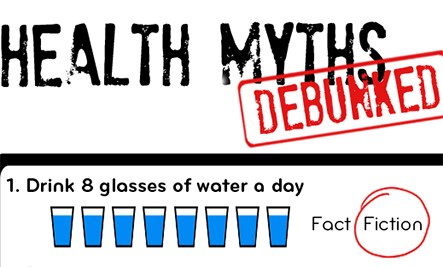
16 Jul Live Longer Retreat: Health Myths – What’s True. What’s Not.
This summer, the Telluride Ski Resort and The Peaks Resort & Spa in Mountain Village are hosting week-long wellness intensives titled Live Longer Retreat. The Big Idea is to support your annual resolution to get really healthy and therefore live longer well. Half the year is in the rear view mirror. What progress have you made?
With an evidence-based, scientific approach to health and longevity and featuring an experienced staff of medical professionals, personal trainers, Pilates and yoga instructors, dietitians, and chefs, all focused on your unique wellness profile, each Live Longer Retreat is one-of-kind in the U.S.
The intensives, limited to only 10 – 15 participants, include personal consultations, hiking, spinning, yoga, Pilates, talks and demonstrations related to nutrition, cooking classes, and more. Dates this debut summer/fall season are August 19 – August 25 and September 27 – September 30.
The program is led by Dr. Alan Safdi, a world-renowned internist and gastroenterologist with encyclopedic knowledge of mind-body wellness and preventative medicine. Dr. Safdi also has a gift for delivering evidence-based medical findings for healthier living in easily digestible sound bytes.
In the run-up to the retreats, Dr. Safdi is posting regular updates on Telluride Inside… and Out based on the latest, closely vetted research about subjects in the field of health, wellness and longevity.
This week, however, we are giving Dr. Safdi a time-out. Instead please scroll down and read this curation from Medical News Today on the subject persistent health myths. What’s true; what’s not.
Feel free to sign up now to participate in a Live Longer Retreat – or call 1-877-448-5416 for further information.

Throughout the centuries, many health myths have arisen. Some are tried, tested, and taken as fact, but others are nothing more than fantasy. In this article, we debunk some of the latter.
Health-related myths are common and arise for a variety of reasons.
Some may be “old wives’ tales” that have been passed from generation to generation, which somehow escape being challenged outside scientific and medical professions.
Other times, it can be that old but previously accepted science—such as the results of studies from the mid-20th century—is found by modern scientific methods to be less accurate than originally thought.
In this article, we take a look at five of the most common health myths and examine the evidence behind them.
1.Drink eight glasses of water per day
The Centers for Disease Control and Prevention (CDC) are unambiguous in this matter, stating that “drinking enough water every day is good for overall health.”
The question is, how much water is “enough?” The CDC note that there are no guidelines on how much water we should be drinking daily.
But, they do link to the National Academies of Sciences, Engineering, and Medicine, who say that women require 2.7 liters and men require 3.7 liters of “total water” per day.
The total water point is crucial; this refers to not how many liters of water you should drink from the faucet, but about what your rough intake of water from different drinks and foods combined should be.
It is vital to note that the average person’s total intake of water from drinks—including caffeinated drinks—forms about 80% of their total water intake, with the remaining 20% actually coming from foods.
Many people believe, however, that the recommended daily amount of water is eight 8-ounce glasses, which equals 2.5 liters, straight from the faucet.
This figure does not take into account the amount of water we get from other drinks or foods at all. And, this figure does not appear in any official or scientific United States guidelines on water consumption. So, why do so many people persist in this belief?
A 2002 study traced the eight 8-ounce glasses of water per day claim—known colloquially as “8×8″—back to the misinterpretation of a single paragraph in a government report from 1945.
In it, the Food and Nutrition Board of the National Research Council wrote, “A suitable allowance of water for adults is 2.5 liters daily in most instances. An ordinary standard for diverse persons is 1 milliliter for each calorie of food. Most of this quantity is contained in prepared foods.”
As recommendations go, this one does not seem to be especially controversial, and it actually seems to tally more or less with what the National Academies of Sciences, Engineering, and Medicine are telling us in 2018.
But the author of the 2002 paper believes that people only paid attention to the first sentence, and that over time, they disregarded the statement about water-containing food. This then led to the very erroneous impression that 2.5 liters of straight water should be consumed every day in addition to whatever water we imbibe from other drinks and food.
Most pertinently, the author of this study did not find any scientific evidence to back up the 8×8 theory in terms of health benefits.
Subsequent studies have also debunked 8×8 as a concept, with a 2011 statement by Dr. Margaret McCartney in The BMJ going as far to lay the blame on manufacturers of bottled water for perpetuating the myth in their marketing.
2. You can catch a cold by being cold
Although, historically, people have assumed that it is the state of being cold that causes people to catch a cold, in this day and age, people are generally more aware that you catch cold not from being outside in poor weather, but from a virus.
We become infected with cold viruses, known as “rhinoviruses,” through physical contact or being in the same space as infected people.
This is especially true if the infected person is coughing or sneezing, or if we have touched some of the same objects as that person.
So, on the face of it, it seems fairly obvious that the concept of cold temperatures causing people to catch colds is a myth.
That being said, there is a mechanism by which being cold may actually make us more susceptible to coming down with a cold.
Cold viruses try to enter the human body via the nose, but they usually get trapped in mucus there. Normally, the mucus is passed back into the body, swallowed, and the virus is neutralized by stomach acids.
But when we inhale cold air, the nasal passage cools down. This slows the movement of mucus, and this means that the live rhinoviruses have more opportunities to break through the mucus barrier and into the body.
Studies have also found that cold viruses thrive in colder weather, because they are less able to survive at normal body temperature.
So, it is largely due to viruses and not just a consequence of cold weather. But the cold weather myth is not just an old wives’ tale, after all.
3. Cracking your joints can lead to arthritis
Cracking your joints does not cause arthritis. But if, like me, you are an inveterate knuckle-cracker, you have almost certainly been admonished at some point in your life by a possibly well-meaning (but more likely annoyed) teacher, colleague, or loved one with the words, “Don’t do that! You’ll give yourself arthritis!”
Several studies have investigated this anecdotal association.
They generally report that individuals who crack their joints are at nearly the same risk of getting arthritis as those who have never cracked their joints. So, no, cracking your knuckles will not increase your risk of arthritis.
If you are worried about what happens in your joints when you hear that sound, you may be reassured by the findings of a 2018 study.
When we crack our knuckles, the researchers explain, we are slightly pulling apart our joints, which causes pressure to decrease in the synovial fluid that lubricates the joints. When this happens, bubbles form in the fluid.
The variations in pressure causes the bubbles to rapidly fluctuate, which creates that characteristic cracking sound, which is oh-so-pleasing to the cracker, but often less so for the people around them.
4. Deodorant can cause breast cancer
Some individuals have suggested that there may be a link between the use of underarm deodorant and the development of breast cancer.
This is based on the notion that chemicals from the deodorant affects the breasts’ cells, given that they are applied to nearby skin.
Nearly all of the studies that have tested this link have found little evidence to support the claim that deodorant can cause breast cancer.
One retrospective study, however, revealed that breast cancer survivors who used deodorants regularly were diagnosed younger than the women who did not regularly use them.
But because this is a retrospective study, its results cannot conclusively prove a link between deodorant use and the development of breast cancer.
The National Cancer Institute say that additional research would be required to prove that a relationship between deodorant use and breast cancer exists.
5. Eggs are bad for the heart
Ever since the 1970s, there has been a strong focus in health care on the role played by cholesterol in heart disease.
Eggs are rich in nutrients, but they also have the highest cholesterol content of any common food.
Because of this, some have recommended that we should eat only two to four eggs per week, and that individuals with type 2 diabetes or a history of heart disease should eat fewer.
But new research suggests there is no link between eating lots of eggs and cholesterol imbalance or increased risk of heart problems and type 2 diabetes.
The study noted that occasionally, people who eat more than seven eggs per week have increased LDL-C, or “bad” cholesterol, but this is almost always matched by a similar increase of HDL-C, which has protective properties.
The evidence suggests that eating even as many as two eggs every day is safe and has either neutral or slightly beneficial effects on risk factors for heart disease and type 2 diabetes.
According to the CDC, eggs are one of the “most nutritious and economical foods” that nature can offer us, and that the main health risk posed by them is a risk of Salmonella infection. The CDC provide guidance on how to best avoid Salmonella.
More about Dr. Alan Safdi:

Dr. Alan Safdi
Dr. Alan Safdi is a board-certified in Internal Medicine and in Gastroenterology and a Fellow of the American College of Gastroenterology. A proven leader in the healthcare arena, Safdi has been featured on the national program “Medical Crossfire” and authored or co-authored numerous medical articles and abstracts. He has been an investigator in over 581 studies and is President of both the Consultants For Clinical Research and the Ohio Gastroenterology and Liver Institute.
Dr. Safdi has been involved in grant-based and clinical research for about 35+ years and is passionate about disease prevention and wellness, not just fixing what has gone wrong. He lectures internationally on the subjects of wellness, nutrition, and gastroenterology.


Sorry, the comment form is closed at this time.